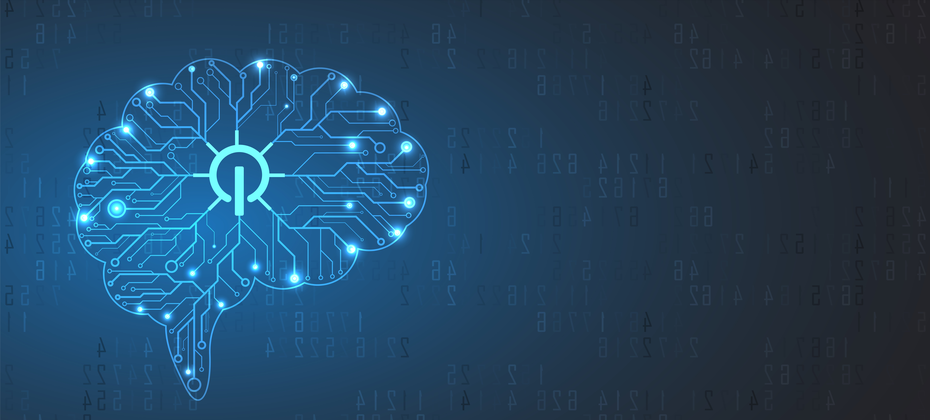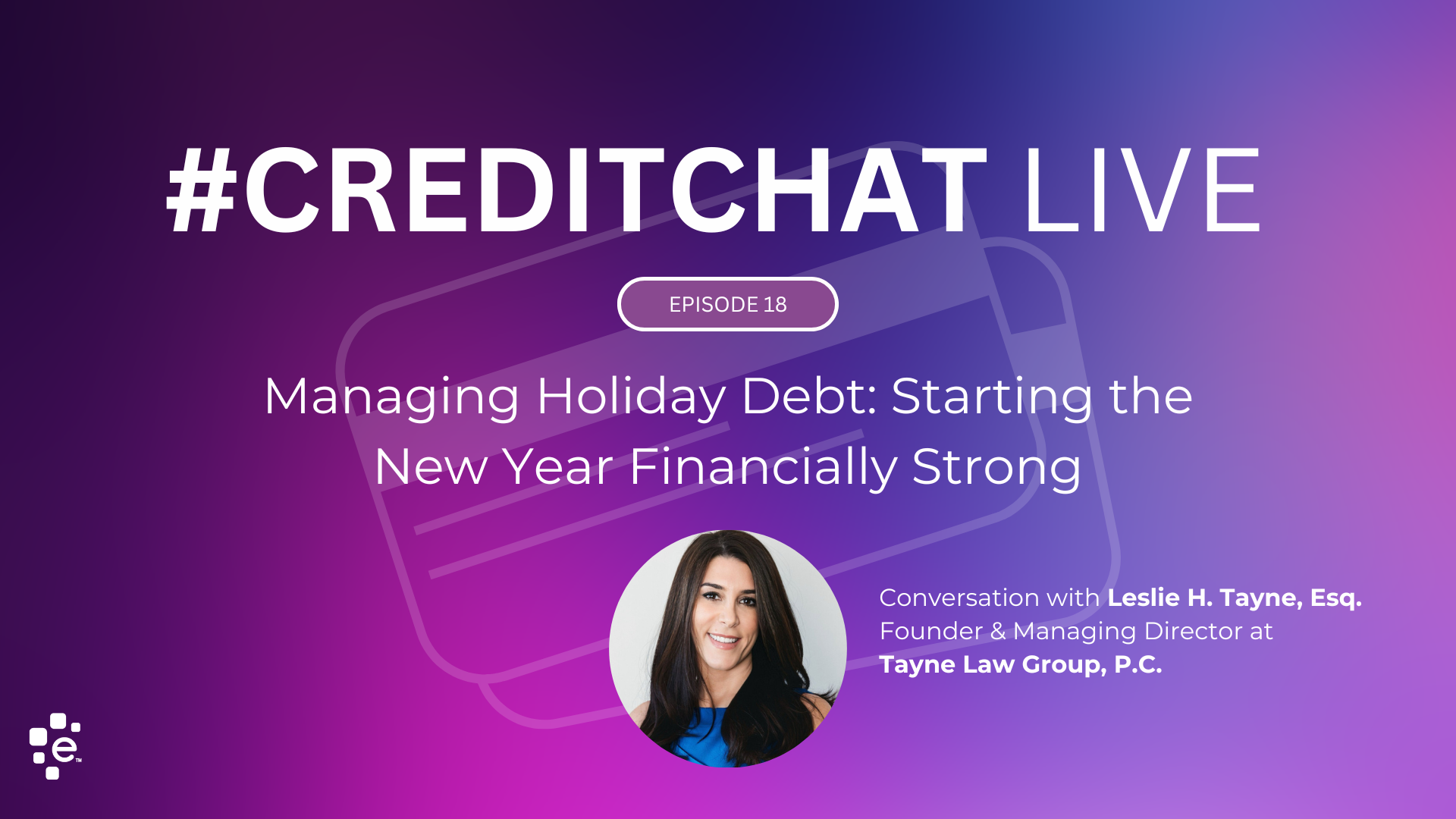Lorem Ipsumis simply dummy text of the printing and typesetting industry. Lorem Ipsum has been the industry’s standard dummy text ever since the 1500s, when an unknown printer took a galley of type and scrambled it to make a type specimen book. It has survived not only five centuries, but also the leap into electronic typesetting, remaining essentially unchanged
Author One
At Experian, we know a credit score is the gatekeeper to better financial opportunities, which is why we are committed to developing products and services that support consumers in their financial journey. Six months ago, we hit a major milestone in bringing this commitment to life with the launch of Experian Boost. This innovative tool gave consumers the ability to add positive telecom and utility payment history directly to their credit file for an opportunity to instantly increase their credit scores for the first time. When we launched Experian Boost, we knew there were more than 100 million Americans who didn’t have fair access to credit because of a limited credit history or a subprime score. We also knew these consumers were often forced to pay higher interest rates and fees for financial services. Today, as we look at our Experian Boost results, we know we’re helping to change that. To date, for consumers who’ve used Experian Boost, we’ve seen: More than 11 million cumulative FICO Score points boosted FICO Scores increased for 2 out of 3 users with an average increase of more than 10 points Of those who boosted their credit scores, an average of 13% moved up a credit tier and of those in the “poor” credit tier, 24% moved to a “fair” tier Approximately 90% of “thin” file consumers who improve their credit scores saw an average increase of 19 points California, Texas and Florida rank 1-2-3 in number of consumers who have boosted their scores and total points boosted To say we’re pleased with the positive feedback we’ve received about Experian Boost to date would be an understatement, but we’re not surprised. For years, lenders have been seeking new means to identify creditworthy consumers. At the same time, consumers have been asking for more control of their data and credit where credit is due. This is exactly what we’re providing with Experian Boost. We’re helping to level the playing field and reward positive behavior and it’s not going unnoticed. Members of the credit counseling and advocacy community have reached out with excitement about Experian Boost. This solution is giving many of their clients a tangible way to impact their credit scores and improve their financial lives. Improving consumer financial health is a core part of our sense of purpose and we’re just getting started. We’ll continue to enhance Experian Boost and develop new products and solutions to improve financial access to for more consumers. To find out more about the Experian Boost, please visit www.experian.com/boost.

Eva lets out a deeply frustrated exhale as she navigates moving boxes in her new apartment towards a nearby chair. She was just trying to update her address online and take care of some online banking money transfers. Now her accounts are frozen, and she has received a message to call the bank's fraud department. How could she be a fraudster? She was only guilty of taking a job and moving to Chicago. Maybe it's time to start thinking about changing banks… Meanwhile, in the bank's Texas-based fraud department, Robert spots Eva's case in his fraud investigations list. He noticed some suspicious activities and leaves Eva a voicemail, wanting to ask her a few questions to verify her identity or otherwise confirm this is in fact a fraudster infiltrating Eva's account. To prevent this potential risk of fraud from escalating, Robert decides it is better to freeze Eva's accounts while he confirms that it's actually Eva who is trying to change her address and not a fraudster using a stolen password. As both Robert and Eva work to connect and clear up this mix-up, Robert isn't getting to spend his time finding actual fraud and protecting his bank from any potential losses. Fraud hubs bring together advanced authentication technology and risk mitigation systems into a single platform As fraud attacks grow more frequent and complex, new technologies have sprung up to help meet the challenge, using a variety of tactics and tools to detect fraud. This is the case of device recognition, malware detection, identity verification, behavioural biometrics, and document verification, just to name a few. Regardless of their choice of tools and techniques, businesses across banking, retail, telecommunications, healthcare, and services industries need to know that the person interacting with them online is who they say they are. Combating fraud with layered tools strengthens businesses' defenses. But without an intelligent approach to connecting those tools, businesses catch too many good customers (like Eva) in their fraud-mitigation nets. By bringing together different types of fraud mitigation and risk management systems on a single technology platform, fraud hubs provide a solid solution to this challenge. How do fraud hubs like CrossCore help both businesses and consumers? CrossCore brings together into a single platform best-in-class tools and services such as advanced analytics, data consortium, device recognition, endpoint malware, and bot detection, behavioural biometrics, and document verification. Experian has also been named by Gartner as a representative vendor in online fraud detection in their April 2019 Market Guide for Online Fraud Detection, for its CrossCore solution.* Our flagship identity and fraud hub connects various functionalities together in a smart, orchestrated way, leveraging machine learning-driven decisioning to deliver a single fraud decision across multiple tools and enabling businesses worldwide to improve their fraud detection capabilities. CrossCore equips businesses with the most applicable tools to combat the specific fraud threats they face in their organisation. The 100 million cumulative transactions we have run on CrossCore to date show us that while one client may need additional protection against synthetic identity fraud, another may face frequent bot attacks in their account opening application, therefore requiring different approaches. It also means that if one tool can't validate a user's identity, another system can provide evidence that this is, in fact, a real customer. It's precisely the advanced analytics underpinning data modeling what gives our clients greater confidence in their identity and fraud decisions. But let's go back to Eva. In her case, CrossCore's fraud risk engine would have fired rules when she was making a change of address, as this action elevates the potential for fraud. But CrossCore's device intelligence would have shown that Eva was logging in from a known mobile phone. She was also using her phone to type information in a way that a normal user (non-fraudster) would do. In that case, CrossCore would have asked for a step-up authentication where Eva is prompted to take a selfie for biometric authentication. Now, Eva can continue to do her banking and access her accounts as she would normally do. This is a relief as Eva checks off more moving-related tasks and can enjoy her new life in a new city. Back in the bank's fraud investigation office, Robert and his colleagues would have never seen a case for their customer, Eva. Instead, they would have been able to focus their energies on high-risk cases, mitigating any emerging fraud threats. They would have also treated Eva as the good, valued customer she is and helped ensure her business in the long run. Whether it's an automotive client in South Africa, a healthcare organisation in the U.S., an insurance company in the UK, a fintech in Australia or a bank in Brazil, CrossCore is helping to solve one of the greatest challenges in decision analytics today: identifying good customers, while reducing fraud. Download the 2019 Global Identity & Fraud Report. *Gartner does not endorse any vendor, product or service depicted in its research publications, and does not advise technology users to select only those vendors with the highest ratings or other designation. Gartner research publications consist of the opinions of Gartner's research organization and should not be construed as statements of fact. Gartner disclaims all warranties, express or implied, with respect to this research, including any warranties of merchantability or fitness for a particular purpose.

As a member of the Forbes Technology Council, I get to publish articles on some of the latest technology trends and best practices. A recent piece, entitled “Are we comfortable with machines having the final say?”, deals with the sensitive issue of decisions being made by complex algorithms and how it impacts all areas of our lives. The article takes a closer look at high-impact decisions, such as loan determinations and health diagnosis, where the lack of understanding how algorithms may be used is becoming of increasing concern. In this context, it raises the importance of Explainable AI (XAI). This is a concept where technology and science are being used to explain how an algorithm or machine reaches a decision and tries to do this in a way that is transparent to users. However, this approach is still being tested and is only used in certain limited circumstances. As humans, we are taught to explain our decisions but we all know how difficult it is – and science has repeatedly shown how easily biased we are. XAI still has some way to go, but we can inspect, test and pick machines apart in a way we can never do with the human mind. So perhaps one day we will find a way to truly explain a machine’s decision. Whether that would make us comfortable with the machines having the final say, is still to be seen. Check out the full article here.

Phishing attacks have become more sophisticated and personal. We are all busy with life – work, family, commute, and dinner plans, along with keeping up on the latest news cycle. Virtually anyone could be inclined to quickly click on a link stating there is an issue with their recent order. But there's more to phishing attacks than just baiting businesses and consumers. During a recent #ExperianLive event, Mike Gross, Head of Global Identity and Fraud Product Innovation, discussed what businesses can do to protect themselves and their customers. Q: You say that phishers would make good digital marketers. What do you mean by that? Mike: Like a great marketer, a good phisher understands people and their tendencies; they know how to get people to take action on their message. Take my most recent “almost phishing" incident. During the holidays, I received an email from a top online retailer stating there was a “problem with my recent order." I knew that any delay would jeopardize my holiday gift delivery. I was just about to click the “Login" button and then stopped. Thankfully, I double-checked the sender and it wasn't my favorite shopping site after all – just a really good fake email from a "phishy" sender. Like a digital marketer, phishers understand how to specifically target the things that people care about. This is why phishing attempts focused around the holidays, tax season, natural disasters, and hot news topics are often so successful. Q: Are phishers counting on the relationship and roles people have in an organization? Mike: Yes. That's the whole nature behind one of the biggest phishing attacks over the past several years – business email compromises. As a phisher, I'm sending you an email that looks like I work with you, say a vendor with a message that reads, “I changed the account that you use to pay me; please update your payment to this new account." If there is urgency behind it, it is taken seriously – for example, to avoid being late on paying a vendor. Human nature is being helpful and reacting, especially in this fast-paced, hyper-connected world – and that's why these scams continue to work. Q: What other phishing trends are you seeing? Mike: They've evolved over time. Take the simple phishing email; it's not so simple anymore. Nowadays, attacks are personalized to both the business and specific person – and phishers are taking advantage of automation and targeting tools so they can get the most reward for their effort. “Smishing" is variant of phishing focused on the phone channel, where attackers target victims with an SMS-based attack; you've probably seen them. You get a text and link from what you think is your friend saying something like “Check out this funny video!" But it isn't legitimate; it's a fraudster that is spoofing your friend's phone number. Then there is “vishing" which is a voice-based attack. This is where a fraudster pretends to be someone they're not (like a consumer's financial institution) and tries to obtain personal information or take over an existing account. Q: Wow! Phishing fraud is sophisticated. What has led to that? Mike: We've seen a tremendous leap in technology used. There is a great example of that last year with a U.K. bank. Their customers expect that if there is an out-of-place transaction, the bank will call them. In this particular vishing scheme, vishers used compromised accountholder usernames and passwords to log into customer accounts and set up money transfers. Knowing that this would alert accountholders to the attempted transfer using the SMS one-time passcode, phishers called legitimate customers, impersonated the bank, and stated that since the customer was a recent fraud attack victim, the bank needed confirmation that they were the accountholder. The vishers told customers they would receive a passcode. While the customer confirmed the code, the vishers submitted the fraudulent transfer. Q: What trends and techniques are you seeing? Mike: Two of the big trends we're seeing is around Artificial Intelligence (AI), machine learning, and SMS to find victims. A big part of phishing is what we call “spear phishing." This targets individuals with access to an organization's financial accounts or internal systems. Another term is “whaling" which targets a specific high-profile individual. The phishers are no longer just sending out blanket lottery scam and Nigerian prince emails with misspellings to millions of people. It's very focused – and phishers can easily do this using machine learning and AI. Q: Do you notice any seasonality, or spikes in phishing based on a certain time of year? Mike: The holidays are one because so many people go to their favorite shopping sites and buy items that are completely out of pattern based on what they usually do online. Another good example is tax season. We saw phishers impersonate top tax and financial management software providers, allowing consumers to “quickly and easily submit their tax forms online." What's worse is that phishers use the knowledge you have about phishing against you. Things like “How do you protect yourself? Click on this link to learn more" or “Click this link to download software and protect your devices." Also, fraudsters pay attention to the news, so whether it's a natural disaster or the cathedral fire that happened in Paris last April, phishers see those as opportunities to prey on victims simply trying to donate to a worthy cause. Q: What advice do you have for businesses and consumers to protect themselves against phishing attacks? Mike: My advice for businesses is to focus on technology and training. Strong technology solutions must be in place at all businesses to block phishing emails that are coming from suspicious sites – and for the most part, large organizations do a great job of that. Smaller businesses can also take advantage of technology solutions from their internet providers. Businesses can implement web blocking software for less secure Internet sites and filter what types of content employees can have access to on business devices. A lot of companies hire outside consultants to talk about the different types of phishing attacks with employees. These are helpful, but the key is to not allow training to become static because attackers evolve so quickly. Both businesses and consumers can use the email filtering option that is available through nearly every email provider. Don't click on any attachments that even remotely look suspicious – especially if they've been texted to you from someone you either don't know or the message appears out of character for someone you know. Q: What activities is your group taking on that will help businesses and their customers fight phishing attacks? Mike: There are several things we're doing that impact businesses and consumers offline and digitally. We help businesses recognize their customers and authenticate them, whether that's helping customers with a new bank account, enabling easy checkout at a favorite retailer app, or protecting account logins. 99% of people trying to access accounts are the legitimate account holder; it's that 1% though that causes a lot of friction for good customers. So, we're trying to make it easier for those consumers to quickly pass through all of the controls so authentication is easier. That translates into consumer loyalty for brands. Q: And that's what it's really all about? Mike: It is. We help businesses recognize their customers and also ensure that they are catching fraudsters on the back end. But we also strive to make that recognition or user experience as seamless as possible, with the right scrutiny for the risk level of that business. Mike Gross leads product innovation strategy for Global Identity and Fraud at Experian. Check out the entire podcast and video on how to protect your business from phishing here.

Across the globe, fraud risks continue to grow and businesses continue to invest more to combat potential threats. According to Experian's 2019 Global Fraud and Identity Report, which was published this past January, more than half of businesses across the world have increased their fraud management budget in the past twelve months. I recently had the opportunity to discuss this very topic with Forbes.com. In the article I raised the issue of whether businesses are investing in the right places. Our research shows that businesses may sometimes be investing in the wrong capabilities or point solutions that are materially less effective than if they were to take a layered approach to fraud detection. To provide consumers with both security and convenient online experiences, companies must have a complete understanding by looking at the problem holistically. By layering multiple approaches such as digital risk assessments leveraging device intelligence, behavioural biometrics together with more traditional measures – businesses can focus their resources where it matters most – providing a safe yet convenient online environment for their customers. The Forbes article also looked at the issue of trust. The anonymous nature of digital interactions makes creating trusted and meaningful relationships with digital consumers difficult. Unlike face-to-face interactions where people rely on visual cues, and relationships developed over time, businesses must find other ways to quickly recognize their customers online and deliver personalized experiences. At Experian, we believe trust is extremely important. In fact, the report found that nearly eighty percent of consumers say the more transparent a business is about the use of their information, the greater trust they have in that business. And fifty-six percent of businesses plan to invest more in transparency-inspired programs such as educating consumers, communicating terms more concisely and helping consumers be in control of their data. There is no doubt about it, businesses who want to continue to thrive and lead in the digital economy will find ways to offer their customers both security and convenience whilst building trust with their audience. Learn more the state of fraud and how trust plays a role by downloading our 2019 report: Consumer trust: Building meaningful relationships online.
In this article…
First Heading
Lorem Ipsumis simply dummy text of the printing and typesetting industry. Lorem Ipsum has been the industry’s standard dummy text ever since the 1500s, when an unknown printer took a galley of type and scrambled it to make a type specimen book. It has survived not only five centuries, but also the leap into electronic typesetting, remaining essentially unchanged
It was popularised in the 1960s with the release of Letraset sheets containing Lorem Ipsum passages, and more recently with desktop publishing software like Aldus PageMaker including versions of Lorem Ipsum.
Why do we use it?
It is a long established fact that a reader will be distracted by the readable content of a page when looking at its layout. The point of using Lorem Ipsum is that it has a more-or-less normal distribution of letters, as opposed to using ‘Content here, content here’, making it look like readable English. Many desktop publishing packages and web page editors now use Lorem Ipsum as their default model text, and a search for ‘lorem ipsum’ will uncover many web sites still in their infancy. Various versions have evolved over the years, sometimes by accident, sometimes on purpose (injected humour and the like).
It was popularised in the 1960s with the release of Letraset sheets containing Lorem Ipsum passages, and more recently with desktop publishing software like Aldus PageMaker including versions of Lorem Ipsum.
Why do we use it?
It is a long established fact that a reader will be distracted by the readable content of a page when looking at its layout. The point of using Lorem Ipsum is that it has a more-or-less normal distribution of letters, as opposed to using ‘Content here, content here’, making it look like readable English. Many desktop publishing packages and web page editors now use Lorem Ipsum as their default model text, and a search for ‘lorem ipsum’ will uncover many web sites still in their infancy. Various versions have evolved over the years, sometimes by accident, sometimes on purpose (injected humour and the like).
Second Heading
It was popularised in the 1960s with the release of Letraset sheets containing Lorem Ipsum passages, and more recently with desktop publishing software like Aldus PageMaker including versions of Lorem Ipsum.

Where can I get some?
There are many variations of passages of Lorem Ipsum available, but the majority have suffered alteration in some form, by injected humour, or randomised words which don’t look even slightly believable. If you are going to use a passage of Lorem Ipsum, you need to be sure there isn’t anything embarrassing hidden in the middle of text. All the Lorem Ipsum generators on the Internet tend to repeat predefined chunks as necessary, making this the first true generator on the Internet. It uses a dictionary of over 200 Latin words, combined with a handful of model sentence structures, to generate Lorem Ipsum which looks reasonable.
There are many variations of passages of Lorem Ipsum available, but the majority have suffered alteration in some form, by injected humour, or randomised words which don’t look even slightly believable. If you are going to use a passage of Lorem Ipsum, you need to be sure there isn’t anything embarrassing hidden in the middle of text. All the Lorem Ipsum generators on the Internet tend to repeat predefined chunks as necessary, making this the first true generator on the Internet. It uses a dictionary of over 200 Latin words, combined with a handful of model sentence structures, to generate Lorem Ipsum which looks reasonable. The generated Lorem Ipsum is therefore always free from repetition, injected humour, or non-characteristic words etc.
Author test
Buttons margin test
